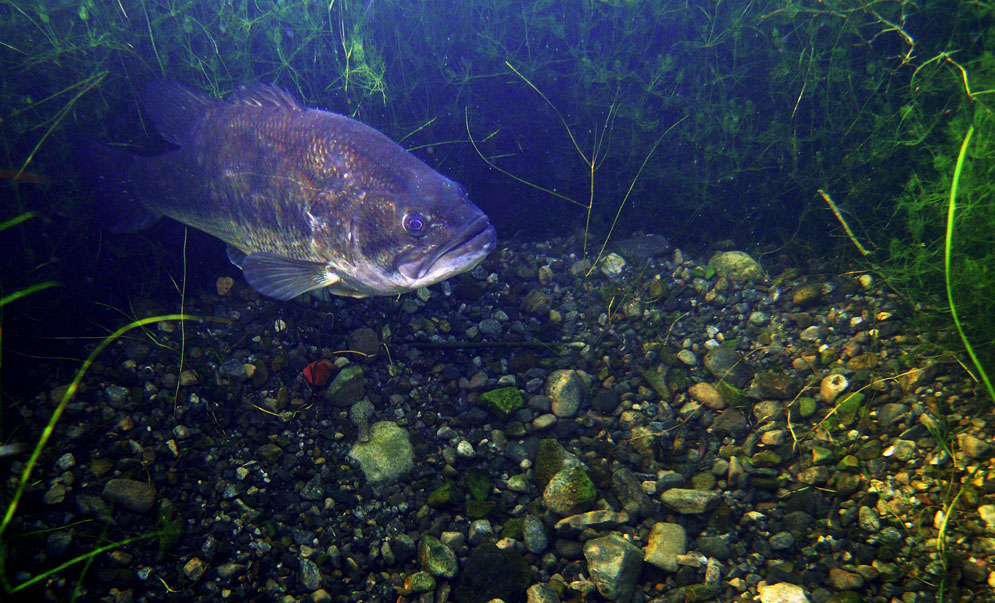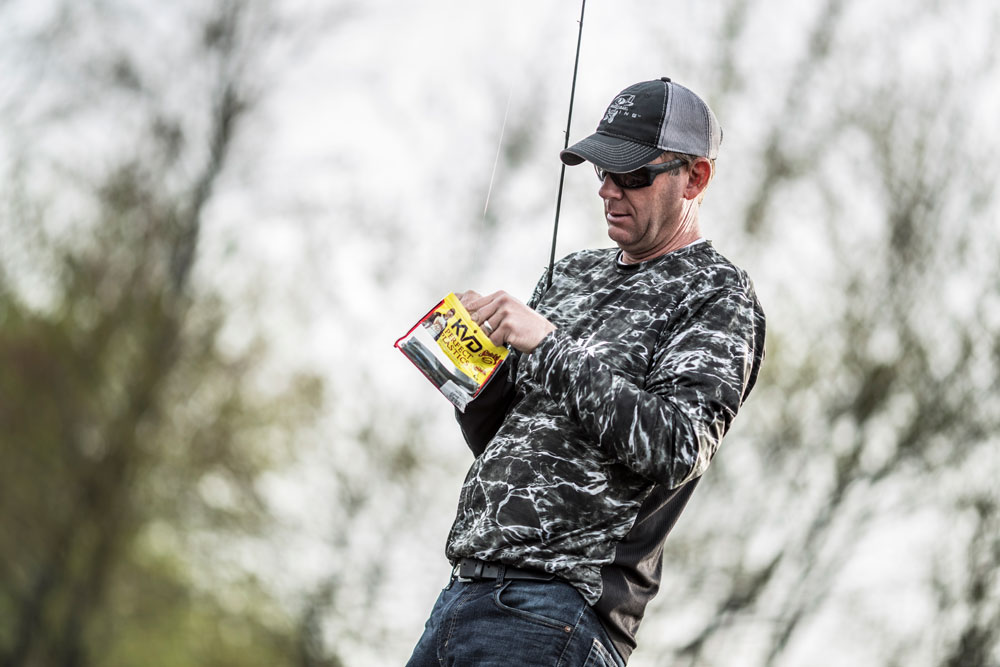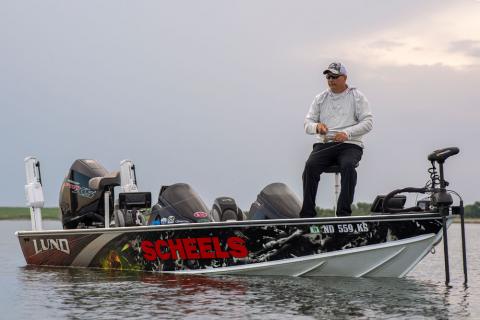For a bass angler, early spring is the best time of year. Bass are beginning to get active, moving from their winter nooks and crannies to warmer, shallower, more open areas of the lake.
Some anglers live in warmer zones and may have been angling for bass for months already. Others have been patiently waiting for the lakes and rivers to thaw and the warm fronts start moving in.
If you're itching to get out on the water and land some bass, here are details about the pre-spawn period and excellent tips on how to catch some bass in the early spring when they're just up and about. If you're considering hitting the lake in the pre-spawn season, check the water temperature and what the bass are eating to reel in a few big ones.

Pre-Spawn and Spawn
Bass in early spring are only thinking about one thing—reproduction. Just before they immerse fully into the spawn, they partake in a feeding frenzy of protein-heavy food like crawfish that help the female bass develop eggs.
Bass won't eat at all during the 10 to 14 days that the spawn lasts, so they're packing it in like a bear before hibernation. When bass move into their spawning season, they focus on protecting their eggs and become defensive and easily riled.
Other species of fish like shad, a great choice of bait for white bass, start their spawning cycle, and the bass take advantage of that by aggressively hunting the smaller species of fish. Lures that mimic shad, minnow, bluegill, and bream are all great choices in this season.
Check the Water Temperature
Bass are most definitely creatures of habit. Their instincts—to hunt, take cover, and spawn— are primarily dictated by the temperature of the water in which they live. When the water is warm, between 55- and 65-degrees Fahrenheit, largemouth bass begin to spawn. Bass start to feed massively during pre-spawn, which generally occurs when the water is between 48 and 55 degrees.
If you're fishing for smallmouth bass, they follow the same routine, except they enter each new phase when the water is a few degrees cooler. Most fishing boats have a temperature gauge so you can note and record the water temperature easily.
Some anglers maintain that the moon cycle is almost as important as water temperature when you're going after some giant bass pre-spawn. The new moon and full moon are times when bass are very active.
Water Clarity and Cover
When the water is exceptionally clear, bass go deep. Their instinct is to hide and, without ample opportunity to do so in murky water, they head to the lake depths to conceal themselves for hunting.
If the water you're fishing is relatively murky and muddy, bass will hold close to whatever cover they can find, often at much shallower depths than in more transparent bodies of water. Grass, docks, old logs, boulders, or stumps make for excellent cover in cloudy water.
When the bass finally get to their spawning grounds, they make sure that their spawning activities and their eggs will not be disturbed by waves or wind. Behind boat docks, around corners, or in an undisturbed pocket are exceptional places to find spawning bass.
Food Sources
The most direct way to pick lures and bait for springtime bass fishing is to note what's going on in the lake. Bass are opportunistic eaters, and they have a lot to choose from as the waters warm.
Observe the waters on which you're fishing to see what looks abundant. The best live bait for bass are crawfish and minnows (minnows is a catch-all term and can include shiners, shad, and creek chub). Lures with a lot of action and that stay in the strike zone for as long as possible are especially successful in early spring.

Try lures that have the same heft and coloring as crawfish, the bass's favorite pre-spawn meal. Crawfish are called various names in different areas of the country, such as crayfish, mudbugs, or crawdad. They mean the same type of small crustacean, however, so pick your lures accordingly.
Pick a lure with lots of appendages, and one that makes movement. If the water is clear, reaction lures or search baits are a good choice. These are lures that bass will strike when they're in an aggressive feeding frenzy or when they're easily provoked while protecting their eggs. Crankbaits, spinner baits, and jerk baits are all great options.
Bluegills and sunfish also fall victim to bass in this period, mainly because the larger fish are protecting the spawning flats from any predators. Lures that echo the silvery quickness of these fish are excellent for getting a bass to strike.
Springtime Technique
Take into account the bass' attitude as you concoct a technique for fishing them early in the spring. They are either aggressively hunting or assertively defending their spawning grounds. Either way, it won't take much to rile them.
Once you've found an appropriate bass spawning area, lead with some lures that cover a lot of water, like crankbaits or reaction lures. If you cast in a wide fan, you may be able to get a reaction strike.
If you want your lure to go deep like the bass, choose a weighted lure that will do an excellent job of banging around the bottom of the lake, hopefully inciting angry reactions from the bass. Weight an already heavy lure with lead strips or tape so that, even after it bangs on a rock, it still sits on the bottom. These lures, and their close contact with the lake bottom, mimic crawfish scurrying across the lakebed, kicking up silt.
Last Word
If you're heading out in the pre-spawning stage in early spring, make sure to have the gear necessary to check the water temperature, and the right lures to mimic the bass' favorite seasonal foods. Spring is a time of changeable weather, so pack lots of layers.






























